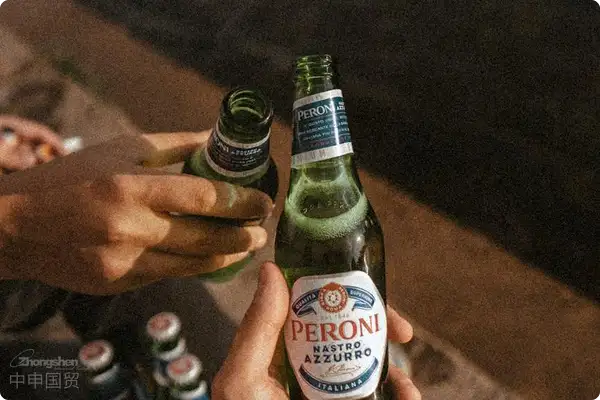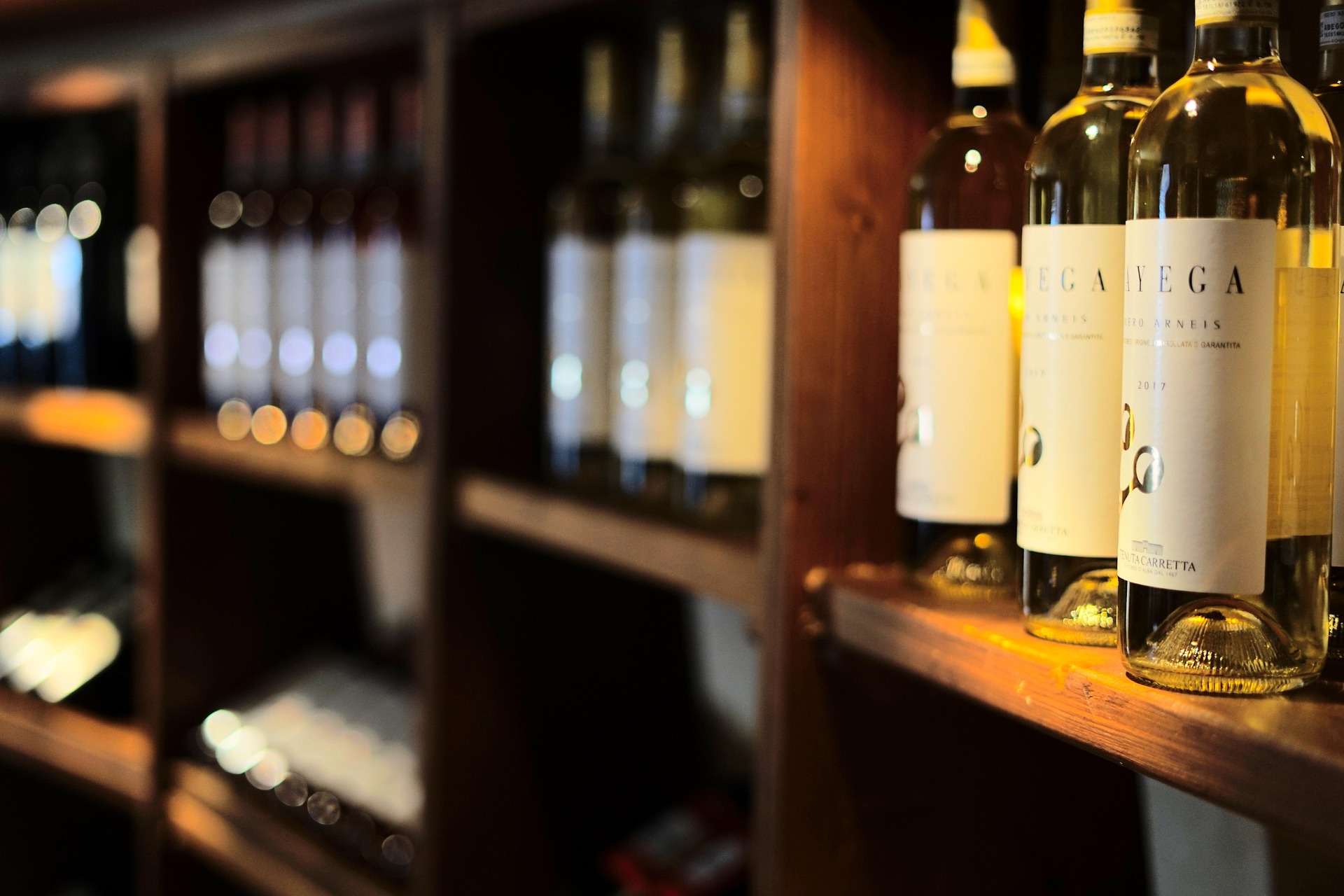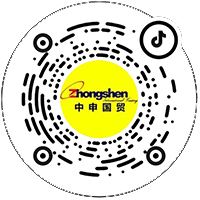Import Beer Agent Pitfalls: Avoid Costly Mistakes
国产清纯美女啪精品一区 |
手机在线一区二区三区观看 |
国产黄a三级三级三级av在线看 |
蜜臀人妻精品一区二区免费 |
亚洲av色一区二区三区精品东京热
|
五月开心婷婷六月丁香婷 |
国产五月色婷婷六月丁香视频
|
欧美黄色免费网站18禁久久
|
亚洲国产精品久久久久性色av |
男人av天堂男人的网站 |
老司机精品成人免费视频 |
美美女高潮毛片视频免费 |
红杏开心五月天中文字幕 |
成人国产一区二区三区精品不卡 |
三级av电影在线免费观看 |
91精品国产乱码久久蜜桃麻豆
|
久久久一区二区三区999 |
人妻在线视频一区二区三区 |
蜜臀av一区二区三区蜜乳 |
国产不卡手机在线观看 |
日本牲交大片在线一区二区
|
日本a级一区二区资源网站 |
久久天堂一区二区三区av |
久久久久久久国产黄片 |
国产三级黄色的在线观看
|
久久久久夜色国产精品亚洲av |
欧美精品香蕉一区二区三区 |
综合久久久久综合综合久久久久 |
亚洲成人精品国产一区二区 |
91色综合久久夜色精品国产 |
99国产精品久久久久久久久
|
亚洲欧美国产日韩中文丝袜 |
国产黄a三级三级三级av在线看 |
久久麻豆精亚洲av品国产精品 |
久久久精品午夜免费不卡 |
激情久久av区二区av |
五月婷婷激情桃花床戏视频网 |
久久精品有码视频免费观看 |
日本av电影一区二区在线观看
|
99人妻精品日韩欧美一区二区三区
|
性色av资源一区二区三区 |
99久久精品氩 99久久久 |
久久麻豆精亚洲av品国产精品
|
亚洲欧美国产日韩中文丝袜 |
久久精品国产亚洲欧美成人 |
日韩精品人妻中文字幕有码网址 |
国产精品爽爽va在线全集观看 |
日韩中文字幕有码午夜美女 |
日韩成人精品在线播放 |
久久精品亚洲国产av麻豆长发 |
精品人妻久久久久久888不卡 |
最近中文字幕高清免费大全 |
国产一区二区三区久久综合 |
日本片一区二区在线视频
|
中文字幕成人精品久久不卡 |
中文字幕女同性恋一区二区三区
|
午夜激情丝袜美腿诱惑影院 |
亚洲午夜一级艳片欧美精品
|
国产精品一区二区三区剧情片
|
日本免费播放器一区二区 |
国产精品福利在线播放 |
亚洲欧美一区二区三区爽爽爽
|
亚洲国产欧美日韩成人精专区
|
高清亚洲中文字幕一区二区 |
久久精品国产亚洲欧美成人 |
久久精品国产亚洲av蜜臀 |
99精品免费久久久久久久久 |
国产一区免费在线观看99
|
日韩欧美一区二区三区三 |
91色综合久久夜色精品国产 |
国产精品福利在线播放 |
国产丝袜美腿一区二区三区 |
精品国产高清三级在线观看 |
欧美成人精品视频一区二区
|
大胸熟女少妇一区二区三区 |
日本一区二区三区不卡视频在线 |
蜜臀av在线精品国自产拍 |
99久久精品免费看国产四区 |
日韩国产精品综合高清av= |
欧美日韩国产欧美日韩国产欧美日韩 |
中文字幕成人精品久久不卡
|
国产99视频精品免费视频美女
|
亚洲天堂男人天堂女人天堂
|
十分钟做a小视频免费观看 |
欧美人式的精品一区二区 |
蜜臀av一区二区国产在线 |
视频区 图片区 小说区免费 |
人妻少妇精品一区毛二区 |
五月天综合网亚洲精品国产精品
|
久久久久夜色国产精品亚洲av
|
亚洲中文字幕丝袜熟女久久 |
五月婷婷六月丁香在线播放
|
亚洲精品中国一区二区久久
|
国产网曝门精品一区二区三区 |
日韩免费高清中文av |
精品夜夜嗨av一区二区 |
久久99久久久国产精品 |
亚洲精品在线中文字幕第一页 |
91偷国自产一区二区三区蜜臀 |
精品视频精品91美女视频 |
久久亚洲国产精品五月天
|
国产精品亚洲精品日韩已满十八小 |
欧美制服丝袜国产日韩一区 |
91精品人妻一区二区三区蜜臀 |
欧美日韩一区二区三区四区视频 |
国产精品久久久久久吹潮 |
视频一区二区不中文字幕 |
人妻少妇精品一区毛二区 |
国产精品欧美三级在线观看 |
国产精品日韩欧美在线第一页
|
精品国产亚洲一区二区麻豆 |
色狠狠一区二区三区蜜桃av |
午夜亚洲精品久久久久久小说 |
色哟哟一区二区三区中文字幕
|
国产乱人精品视频69av |
97久久夜色精品国产蜜桃 |
中文字幕成人精品久久不卡 |
蜜桃av一区二区三区在线观看 |
国产一区免费在线观看99
|
欧美精品久久一区二区三区四区 |
网友自拍偷拍视频一区二区 |
国产精品久久永久免费看
|
手机在线观看网址你懂的 |
中文字幕精品乱码亚洲一区 |
日本免费一区二区三区视频在线
|
日韩精品一区二区三区四区不卡 |
久久久精品午夜免费不卡 |
亚洲精品aⅴ中文字幕乱码麻豆 |
欧美精品欧美一区二区精品久久久
|
嫩草国产一区二区三区av |
色综合一区二区日本韩国亚洲
|
人人妻人人妻人人妻碰碰 |
国产91精品露脸国语对白
|
午夜三级视频久久国产丝袜美腿 |
久久av一区二区三区四区五区
|
日本牲交大片在线一区二区 |
国产日韩欧美一区二区在线高清
|
国产小黄片免费观看小黄片 |
国产欧美在线一区二区三 |
yyy6080韩国三级理论久久 |
九九热国产这里只有精品 |
久久精品国产亚洲av蜜臀 |
亚洲男人天堂久久久久久久
|
亚洲av毛片一区二区三区影视 |
丰满少妇人妻视频一区二区三区
|
久久久亚洲最大ⅹxxx |
亚洲伦理中文字幕一区二区 |
成人黄色小视频下载网站 |
中文字幕乱码亚洲无线码二区 |
亚洲欧美不卡高清在线观看
|
日本不卡免费一区二区三区 |
好吊色欧美一区二区三区顽频 |
日韩欧美国产一区二区免费 |
亚洲欧美日本在线视频观看 |
亚洲天堂男人天堂一区二区 |
日本黄色亚洲成人日韩欧美 |
亚洲日本中文字幕高清在线 |
亚洲av精品一区二区三区四区 |
国产精品爽爽va在线全集观看 |
51国产午夜精品免费视频 |
亚洲女同女同女同女同女同69 |
好吊色欧美一区二区三区顽频 |
国产激情av一区二区三区 |
成人午夜视频全免费观看高清 |
日韩欧美国产中文字幕综合 |
蜜臀国产综合久久第一页 |
av色先锋音影一区二区啪啪操 |
一本之道av免费在线观看 |
黄色av网址在线免费观看 |
午夜三级视频久久国产丝袜美腿 |
极品美女扒开粉嫩小的漫画 |
婷婷99精品国产97久久综合
|
久久久亚洲最大ⅹxxx |
久久精品国产亚洲一级二级 |
欧美一区二区三高清在线观看 |
国产精品久久久亚洲综合天堂 |
国产精品中文字幕在线观看 |
国产精品日韩精品中文字幕
|
亚洲日本精品麻豆一区国产 |
极品美女扒开粉嫩小的漫画 |
国产欧美精品区一区二区三 |
国产欧美日韩精品高清二区综合区 |
国产av一区二区极品六六 |
中文字幕日韩在线第一区 |
欧美精品秘密入口一区二区三区 |
av网站在线免费观看入口 |
日本中文字幕一区二区三 |
久久久精品国产亚洲av网丝祙
|
国产老熟女午夜精品视频 |
亚洲五月六月丁香激情网站 |
久久精品国产亚洲av久 |
国产欧美一区二区三区网站 |
91麻豆精品国产91久久久熟女
|
中文字幕精品久久一区二区三区 |
国产精品熟女av老熟女 |
国内自拍偷拍网站一区二区 |
高清日韩一区二区三区视频 |
国产亚洲一区二区三区综合片
|
欧美午夜精品久久久久久黑人 |
欧美一区二区三区四区五区
|
在线观看日韩中文字幕av |
国产不卡手机在线观看 |
亚洲日本中文字幕高清在线 |
国产欧美日韩一区二区三区精品
|
午夜三级视频久久国产丝袜美腿
|
精品人人妻人人澡人人爽人人牛牛
|
伊人久久大香线蕉综合bd高清 |
狠狠人妻久久久久久综合密桃 |
欧美一区二区黄片免费观看 |
91久久精品国产91久久性色 |
欧美精品网站一区二区三区 |
欧美一区二区三区高清在线视频 |
一区二区三区亚洲欧美日韩人色 |
日韩欧美一区二区三区三 |
黄色av网站未满十八周岁在线播放
|
精品一区二区免费视频蜜桃 |
欧美一区二区三区中文字幕在线 |
亚洲av资源网站在线观看 |
大胸熟女少妇一区二区三区
|
99精品免费久久久久久久久
|
日韩av毛片高清免费在线观看 |
亚洲色图国产精品一区二区三区 |
欧美高清亚洲一区二区在线观看
|
91超碰极品人人人人成人 |
黄页男女视频网址大全免费观看
|
亚洲av色一区二区三区精品东京热 |
亚洲国产精品无石码久久 |
一区二区日韩精品中文字幕 |
一区二区三区亚洲中文字幕 |
99亚洲综合精品久久精品国产久 |
欧美激情欲高潮视频高清 |
精品中文字幕久久久久久 |
一区二区三区在线观看日韩 |
手机在线一区二区三区观看
|
日韩精品亚洲一区二区三区四区
|
欧美精品网站一区二区三区 |
精品国产亚洲一区二区麻豆 |
色婷婷亚洲激情人妻交换小说 |
亚洲av中的一区二区三区四区 |
蜜臀av一区二区国产在线 |
精品国产一区二区三区蜜臂 |
亚洲一区二区三区高清影片 |
日本高清不卡中文字幕免费
|
丰满的女邻居2伦理中文字幕 |
日韩不卡一区二区三区四区 |
日韩欧美国产精品一二三区免费在线 |
蜜臀av一区二区国产在线 |
日本免费播放器一区二区 |
久久精品国产亚洲一级二级 |
欧美日韩久久久久免费看 |
欧美精品一区91久久久 |
国产99视频精品免费视频美女
|
爽国产成人精品午夜视频 |
国产99视频精品免费视频美女 |
丰满的女邻居2伦理中文字幕 |
色姑娘天天操天天日天天舔 |
欧美日韩中文字幕色费性龙做 |
国产一区二区三区色噜噜蝌蚪 |
国产亚洲精品久久午夜玫瑰园
|
激情五月婷婷丁香六月 |
粉嫩欧美一区二区三区高清影视 |
亚洲国产精品一区二区免费电影 |
av网站在线免费观看入口 |
青草伊人久久综在合线亚洲 |
久久精品国产亚洲av久 |
国产老人一区av二区三区 |
久久精品国产亚洲av日韩 |
亚洲福利欧美日韩午夜一区 |
欧美极品一区二区三区欧美大片 |
在线精品国产亚洲av日韩 |
五月天综合网亚洲精品国产精品 |
国产女人乱人伦精品一区二区
|
欧美一区日韩二区日韩二区 |
欧美精品天堂一区二区不卡 |
久久久国产精品一区久久 |
久碰久摸久看好男人视频 |
亚洲精品国产成人久久精品网 |
国产精品久久久久久久久久久痴汉 |
欧美日韩中文字幕午夜在线 |
欧美一区二区三区加勒比 |
国产精品熟女av老熟女 |
中文字幕黄色综合网免费 |
欧美亚洲综合另类精品国产色拍图 |
中文字幕黄色在线免费观看
|
欧美日韩国产中文在线一区二区 |
精品国产一区二区色老头
|
亚洲欧美日韩综合另类一区 |
日韩在线视频不卡一区二区三区
|
日韩欧美亚洲中文字幕乱码 |
亚洲一区二区三区视频在线播放 |
美美女高清毛片免费视频 |
日韩夫妻精品熟妇人妻一区 |
免费在线观看91精品美女 |
欧美日韩亚洲中文字幕二区网址
|
日韩一级黄色片在线观看的 |
小说区图片区偷拍区视频 |
亚洲国产成人在人网站天堂 |
日韩 中文字幕高清最新 |
中文字幕免费av中文字幕免费
|
国产欧美一区二区三区网站 |
欧美日韩国产精品系列区 |
国产精品宅福利无圣光视频 |
91精品国产91久久福利 |
日本一区二区不卡免费观看 |
亚洲av日韩av全部精品 |
视频区 图片区 小说区免费 |
女同熟女少妇同性少妇女同 |
蜜臀欧美精品一区二区免费看 |
亚洲国产一区二区在线网站网址 |
久久综合九色综合88中文字幕有码 |
国产女人乱人伦精品一区二区 |
日韩精品 中文字幕 有码系列 |
国产中文高清日韩av网站 |
欧美日韩国产欧美日韩国产欧美日韩
|
成人精品精品视频在线播放 |
欧美视频黄页大全在线观看 |
亚洲av熟女国产一区二区性色 |
欧美熟妇一区二区三区仙踪林
|
欧美日韩久久久久免费看 |
欧美日韩亚洲中文字幕二区网址 |
亚洲激情五月之综合婷婷 |
一区二区三区av 在线播放 |
黄色三级av在线免费播放 |
欧美大陆日韩一区二区三区 |
日韩亚洲欧美中文字幕在线观看 |
亚州中文字幕乱码中文字幕 |
亚洲熟妇中文字幕五十路
|
91精品国产91久久久久久 |
欧美加勒比一区二区三区 |
亚洲精品揄拍自拍首页一 |
久久亚洲国产精品五月天 |
国产欧美日韩亚洲第一第二页 |
999中文视频在线观看 |
国产精品美女久久福利网站 |
亚洲精品揄拍自拍首页一 |
久久精品美女av一区二区 |
高清日韩一区二区三区视频 |
日韩a国产v亚洲欧美精品 |
18禁无遮挡禁无遮挡免费播放 |
哪里可以看日本动作电影 |
美女爱爱图片一区二区三区 |
国产精品极品白嫩在线 |
欧美日韩亚洲激情在线观看 |
日本牲交大片在线一区二区 |
欧美老人激情五月综合网 |
网友自拍偷拍视频一区二区
|
欧美精品久久一区二区三区四区 |
国产清纯美女啪精品一区 |
女同熟女少妇同性少妇女同 |
国产亚洲精品久久久一区
|
国产精品国产三级国产专区 |
亚洲欧美色欧另类欧日韩 |
久久综合色最新久久综合色 |
91在线免费观看高清视频 |
国产拍欧美日韩视频一区 |
亚洲一区二区三区 日本 |
色综合天天综合网国产人 |
日本免费电影在线观看一区二区三区 |
私人小影院网站午夜在线观看 |
丝袜人妻电影一区二区三区
|
日韩精品人妻中文字幕有码网址 |
人妻少妇电影一区二区三区四区 |
毛片毛片视频毛片视频的毛片 |
国产精品亚洲一区二区久久
|
精品日韩av高清一区二区三区
|
国产精品亚洲综合久久久久久久 |
亚洲国产成人久久一区二区三区 |
黄色资源网日韩三级一区二区 |
小泽玛丽视频在线观看 |
一区二区三区av 在线播放 |
今天有什么电影可以看在电影院 |
亚洲av激情电影在线观看 |
国产精品国产三级国产剧情 |
欧美日韩一区二区三区视频播放 |
久久久精品午夜免费不卡 |
国产精品一区二区三区剧情片 |
亚洲国产精品一区二区免费电影
|
成人精品一区二区三区电影黑人 |
亚洲av资源网站在线观看 |
欧美激情五月天在线观看 |
日本亚洲一区二区色噜噜 |
久久97久久99久久综合欧美 |
黑寡妇精品欧美一区二区毛 |
蜜臀av免费一区二区三区观看 |
尤物免费视频网站在线观看 |
日韩精品一区二区三区四区不卡 |
日韩激情视频免费在线观看 |
亚洲人成网站18禁止天堂 |
亚洲综合色婷婷在线影院p厂
|
欧美激情一区二区三区啪啪啪 |
亚洲欧洲日韩国产免费 |
亚洲黄色av电影手机在线观看 |
国内偷拍高清精品视频免费
|
99久久精品氩 99久久久 |
92看看午夜福利合集免费观看 |
国产一区二区三区日韩精品 |
日本一区二区三区在线观看免费 |
欧美亚洲国产日韩品久久 |
久久99久久久国产精品 |
欧美一区二区三区综合色 |
蜜桃91精品一区二区三区 |
日韩欧美一区二区三区三 |
最新中文字幕乱码不卡一区 |
av乱色熟女一区二区三区 |
日本不卡一区二区三区在线免费 |
日韩人妻成人福利电影一区二区 |
在线精品日韩亚洲欧一二三区 |
亚洲综合色一区二区三区在线 |
午夜国产三级一区二区三 |
欧美精品天堂一区二区不卡 |
国产精品高清国产三级国产a∨ |
国产老熟女午夜精品视频
|
国产69精品久久777的观感 |
最近中文字幕mv免费高清 |
久久国产午夜精品理论片3 |
亚洲人妻一区二区三区av |
欧美日韩加勒比一二三区 |
国产欧美另类久久久精品不卡 |
精品一区二区三区成人免费视频
|
久久精品亚洲国产av麻豆长发 |
精品美女视频一区二区三区 |
蜜臀av一区二区国产在线 |
一区二区三区四区中文字幕欧美 |
国产伦精品99久久自偷国产 |
日韩在线一区二区三区中文字幕 |
成人av一区二区三区免费在线 |
日本一区二区 在线视频 |
色噜噜日韩精品欧美一区 |
日韩电影中文字幕在线观看 |
蜜桃av一区二区三区在线观看 |
亚洲一区二区三区四区91 |
久久综合色最新久久综合色 |
色婷婷一区二区三区四区成人 |
国产黄色一级电影一区二区 |
欧美精品区一区二区三区 |
你懂的国产精品永久在线 |
99久久精品免费看国产四区 |
亚洲欧美日韩综合第一第二区
|
久久精品国产亚洲一级二级
|
日本一区二区不卡免费观看 |
中文字幕免费av中文字幕免费 |
久久精品国产96精品亚洲拳交 |
国产一区免费在线观看99 |
污污污的网站在线免费看 |
日韩亚洲欧美中文字幕在线观看 |
一区二区三级电影在线观看 |
精品少妇极品久久久久久久
|
中文字幕黄色综合网免费 |
国产欧美日韩综合二区三区 |
在线日本一区二区免费观看 |
欧美日一区二区三区精品 |
亚洲国产精品无石码久久 |
一区二区三区久久久久国产精品
|
久久国产精品一区二区三区精品 |
午夜精品久久久久9999高清 |
亚洲欧美日韩偷拍一区二区三区 |
日韩精品一区二区亚洲av性色 |
护士精品一区二区三区99 |
综合图区亚洲欧美另类图片
|
欧美黄色免费网站18禁久久 |
毛片毛片视频毛片视频的毛片 |
99re热在线视频精品观看 |
国产伦精品一区二区三区2 |
欧美视频黄页大全在线观看 |
精品精品国产一区二区性色av |
久久久精品欧美一区二区免费 |
一区二区三区中文字幕乱码 |
黄页网站免费观看小视频 |
国产精品女人高潮毛片视频
|
久久精品一区二区三区资源网 |
精品国产污免费网站入口 |
乱色老熟妇一区二区三区 |
九九视频之九九在线精品视频97 |
亚洲女同女同女同女同女同69 |
国产专区一线二线三线av |
69热视频在线观看免费 |
国产精品初高害羞小美女 |
日韩一区二区三区精品视频第3页
中文字幕aⅴ天堂亚洲国产av
|
小草在线观看视频播放2019 |
亚洲国产精品久久久久性色 |
日本大香伊一区二区三区 |
国产精品网红尤物福利在线 |
国产一区二区精品久久呦 |
欧美一区二区三区亚洲九色 |
亚洲av中的一区二区三区四区 |
新片青青澡久久久久久久久精品 |
蜜桃视频一区二区三区在线观看 |
久久精品国产96精品亚洲拳交 |
亚洲精品国产综合一线久久 |
亚洲视频国产视频自拍视频 |
日本高清视频一区二区在线观看 |
国产黄色一级电影一区二区 |
激情综合网五月激情俺也去 |
在线观看免费视频伊人网 |
国产老熟女午夜精品视频 |
中文字幕日韩精品手机版 |
风流老熟女一区二区三区l |
亚洲欧美日韩精品免费观看 |
都市激情校园春色亚洲成人 |
狠狠狠综合久久久久久久 |
久久麻豆精亚洲av品国产精品 |
久久精品店一区二区三区 |
亚洲天堂一区二区三区天堂古代 |
日韩精品人妻中文字幕有码网址 |
久久精品国产亚洲av日韩 |
久久麻豆精亚洲av品国产精品
|
欧美精品一区二区日韩精品
|
色哟哟一区二区国产精品 |
国产在线精品二区一东京热 |
亚洲福利欧美日韩午夜一区 |
成人午夜视频全免费观看高清 |
五月天综合网亚洲精品国产精品 |
精品一区二区三区在线网站
|
亚洲电影天堂之男人的服务天堂 |
18禁黄网站禁片免费观 |
在线观看麻豆91精品国产
|
尤物精品国产第一福利网站 |
性色av资源一区二区三区 |
亚洲精品国产剧情久久9191 |
欧美中文字幕一二三四乱码
|
久久精品国产亚洲av麻 |
久久精品一区二区66 |
我想看欧美一级特大黄片 |
999精品自产国产免费 |
欧美一区二区在线电影网 |
中文字幕日韩在线第一区 |
日韩成人精品在线播放 |
精品日韩亚洲一区二区三区
|
欧美日韩精品一区二区不卡 |
免费亚洲视频在线观看99 |
欧美日韩精品视频一区二区三区四区
|
蜜臀人妻精品一区二区免费 |
国产亚洲一区二区三区综合片 |
久久久精品一区二区三区大全 |
97精品久久久中文字幕 |
蜜臀av一区二区国产在线 |
久久婷婷六月丁香综合啪 |
欧美一区二区三区亚洲一区 |
人妻体体内射精一区二区 |
国产在线精品一区在线观看麻豆 |
老司机精品成人免费视频 |
国产午夜福利视频第三区 |
亚洲av毛片一区二区三区影视 |
国内一区二区三区黄色片 |
亚洲熟女自拍偷拍一区二区 |
欧美精品久久久久久一区二区三区 |
日本国产一区二区三区在线观看
|
欧美一区二区三区亚洲九色 |
国产精品双马尾后入爆操 |
日韩欧美国产一区二区免费 |
国产偷国产偷亚洲高清日韩 |
国产精品久久久久久吹潮 |
亚洲国产激情免费观看网站
|
日本免费一区二区三区视频在线 |
欧美日韩中文字幕每日更新 |
日韩欧美精品久久久免费 |
一本色道久久99精品综合 |
伊人久久大香线蕉综合bd高清
|
我吸着老师的白嫩大乳漫画 |
国产成人麻豆午夜精品影院游乐网
|
国产欧美一区二区图片专区 |
99亚洲综合精品久久精品国产久
|
人人妻人人玩人人澡人人爽理论片 |
欧美日韩精品一本二本在线
|
亚洲国产精品线路久久 |
日韩av在线不卡免费看 |
国产亚洲欧洲av一区二区三区 |
婷婷六月开心六月色六月 |
国产a级精品一区二区免费看视频
国产激情av一区二区三区
|
天堂网久久久国产午夜精品一二 |
久久久精品一区二区免费 |
9l精品国产高清一区二区三区 |
激情91精品大片在线观看 |
日韩中文字幕久久一二三区 |
亚洲精品一区二区三区免 |
国产精品区一区二区国模 |
日本五十路六十路熟妇 |
日韩成人手机视频在线观看
|
欧美一区二区三区四区五
|
日本免费一区最新在线观看 |
久久国产av性色生活片 |
91精品国产综合久久久久久蜜月 |
91在线精品免费一区欧美直播 |
国产精品清纯白嫩美女s |
蜜臀av一区二区国产在线 |
久久久国产综合av天堂 |
久久精品国产精品亚洲38 |
日韩av一区二区三区免费观看 |
成人免费av中文字幕电影 |
一区二区三区四区av中文字幕 |
日本高清二区视频久二区 |
欧美日本国产一区二区三区 |
国产精品亚洲二区在线看 |
欧洲精品一区二区三区中文字幕
|
国产亚洲欧美一区二区精 |
久久精品噜噜噜成人av |
国产综合久久精品东京热 |
亚洲欧美色欧另类欧日韩 |
96国语自产免费精品视频 |
亚州女同性恋一区二区三区 |
欧美日韩国产欧美日韩国产欧美日韩
|
日本动漫人妻作爱大尺度 |
日本一区欧美二区国产三区 |
国产精品福利网站在线观看
|
天堂资源网一区二区三区 |
日本人妻久久久久久久久 |
中文字幕十乱码中文字幕 |
国产激情av一区二区三区 |
日本不卡免费一区二区三区 |
亚洲av永久精品毛片天堂 |
欧美亚洲国产日韩在线观看 |
欧美一区二区黄片免费观看 |
久久精品国产亚洲av蜜臀 |
一区二区三区视频二男一女 |
欧美二区三区久久久精品 |
国产看片色网站亚洲av |
91色综合久久夜色精品国产 |
色爱区综合激情五月综合激情 |
日本大香伊一区二区三区 |
国产精品一区二区色蜜蜜 |
92精品欧美一区二区三区 |
国产精品日韩av一区二区三区
|
国产精欧美一区二区三区久久 |
后入亚洲美女一区二区三区 |
日韩欧美国产在线看免费 |
亚洲国产成人久久综合小说 |
不卡国产精品爽黄69天堂 |
顶级黄片av一区二区三区精品
|
亚洲精品揄拍自拍首页一 |
成人精品一区二区三区电影黑人
|
99人妻精品日韩欧美一区二区三区
|
熟女av综合一区二区三区 |
国产性情片一区二区三区 |
亚洲人成一区二区三区不卡 |
欧美日韩精品一区二区在线 |
成人黄网站色视免费大全 |
日韩一区二区三区四区在线观看视频
|
国产理论一区二区三区久久 |
人人妻人人妻人人妻碰碰 |
欧美日韩一区二区三区视频播放
|
亚洲大色堂国产资源在线观看 |
国产精品一区二区三区剧情片 |
中文字幕日韩欧美日韩在线 |
欧美一区二区三区亚洲一区 |
国产91色综合久久免费分享 |
疯狂欧美牲乱大交777 |
黄色小说女久久久精品免费
|
欧美老人与小伙子性生交
|
蜜臀av一区二区三区蜜乳 |
97精品久久久中文字幕 |
日本免费一区最新在线观看 |
91国偷自产中文字幕幕 |
国产欧美日韩综合二区三区 |
国产综合av在线免费观看 |
开心五月激情五月婷婷综合网 |
一区二区三区四区中文字幕欧美 |
yyy6080韩国三级理论久久 |
日本一区二区在线视频观看
|
欧美日韩国产中文一区二区 |
欧美色老熟妇与性老熟妇
|
乱色老熟妇一区二区三区
|
午夜激情丝袜美腿诱惑影院 |
久久蜜臀av一区二区中文字幕 |
国产欧美日韩精品一区二区在线 |
毛片毛片视频毛片视频的毛片 |
精品久久久国产成人久久综合一 |
日韩激情视频免费在线观看 |
亚洲欧美日韩精品免费观看 |
欧美精品一区二区三区日韩 |
日韩国产精品久久久久久亚洲 |
亚州国产欧美一区二区三区 |
欧美日韩一区二区三区福利 |
国产精品女人高潮毛片视频
|
欧美一区二区三高清在线观看 |
久久偷拍国内亚洲青青草 |
一区二区三区日本韩国欧美
|
日本东京热视频在线观看 |
92精品欧美一区二区三区 |
欧美五月激情在线播放 |
日韩欧美精品久久久免费 |
久久精品女人18国产毛片 |
欧美国产精品久久久免费 |
国产成人亚洲欧美在线二区小说 |
欧美精品区一区二区三区 |
欧美成人午夜一区二区三区 |
欧美色精品视频在线观看 |
国产精品一区二区白浆视频 |
禁止十八岁看污污网免费 |
精品久久久久久亚洲一区二区三区 |
人人妻人人玩人人澡人人爽理论片 |
亚洲日本中文字幕高清在线 |
小说区图片区视频区亚洲 |
欧美亚洲国产日韩在线观看 |
国产一区二区三区色噜噜91 |
91丝袜精品久久久久久久人妻 |
日韩不卡一区二区在线观看 |
欧美色综合天天综合高清网
|
丰满的女邻居2伦理中文字幕 |
真实国产老熟女粗口对白 |
老司机精品成人免费视频 |
国产日韩欧美视频在线播放 |
欧洲精品一区二区三区中文字幕
|
黑人中出人妻少妇一区二区 |
午夜精品免费视频一区二区三区
|
亚洲一区二区三区视频在线播放 |
国产精品久久久亚洲天堂 |
日本一区二区国产好的精华液 |
国产成人凹凸视频在线观看不卡 |
成人激情毛片免费在线看 |
欧美国产成人久久精品直播 |
午夜精品国产一区二区电影 |
午夜精品国产一区二区电影 |
狠狠狠综合久久久久久久 |
国产丝袜美腿一区二区三区 |
国产无人区码一码二码三码区别 |
国内自拍偷拍网站一区二区 |
欧美日韩免费一区二三区 |
欧美不卡一区二区在线视频 |
日韩黄色成人影院在线观看 |
欧美日韩精品一区二区中文字幕 |
亚州女同性恋一区二区三区 |
免费看污片网站在线观看 |
亚洲欧美国产一区二区三区奶水 |
亚洲国产精品线路久久 |
亚洲欧美中文日韩另类特殊
|
91色老久久精品偷偷蜜臀九色 |
亚洲国产激情免费观看网站
|
四季av一区二区三区中文字幕 |
亚洲中文精品久久久久久久38
|
暗交小拗女一区二区三区 |
91久久精品国产91久久性色 |
日韩av毛片高清免费在线观看 |
久久av不卡人妻一区二区三区 |
国产黄a三级三级三级av在线看 |
精品美女视频一区二区三区
|
亚洲av资源网站在线观看 |
国产亚洲一区二区三区在线观看 |
国产精品女人高潮毛片视频
|
日本一区二区 在线视频 |
日本一区二区不卡免费观看 |
精品国产亚洲一区二区麻豆 |
亚洲va欧美va天堂v国产综合 |
亚洲男人的天堂av中文字幕 |
欧美日韩精品视频一区二区三区四区 |
久久国产精品男人的天堂av |
乱人伦人妻中文字幕禁忌1 |
亚洲电影天堂之男人的服务天堂 |
亚洲国产精品久久男人天堂 |
色哟哟一区二区国产精品 |
欧美一区二区三区亚洲一区 |
色婷婷av一区二区三区免费 |
欧美不卡一区二区在线视频 |
无人区码一码二码三码区 |
欧美成人免费va影院高清 |
99热这里只有精品2023 |
秋霞日韩欧美一区二区三区 |
清纯唯美亚洲色图在线视频 |
在线观看精品国产亚洲av |
国产精品夜夜春夜夜爽久久小 |
国产精品黄网站免费进入 |
国产精品久久一区二区三区青青 |
美日韩人妻精品一区二区三区 |
中文字幕一区二区三区欧美日韩 |
色哟哟一区二区三区中文字幕 |
久久碰国产一区二区三区 |
精品久久久久久久免费影院大全 |
色婷婷在线免费观看视频 |
久久精品色妇熟妇丰满人妻 |
小泽玛利亚电影免费在线观看 |
国产一区二区日韩欧美在线 |
日本高清视频在线网站不卡 |
亚洲欧美国产一区二区三区奶水
|
亚洲精品国产综合一线久久 |
欧美激情欲高潮视频高清 |
亚洲另类国产精品一区二区三区 |
欧美日韩国产三级一区二区三区 |
在线精品日韩亚洲欧一二三区
|
97视频在线观看男人的天堂 |
久久久亚洲最大ⅹxxx |
国产精品国产三级国产av主播 |
久久国产精品骚熟女av |
日本中文字幕一区二区三 |
国内精品免费偷拍小视频 |
久久精品亚洲国产av麻豆长发
|
伊人影院在线免费观看电影 |
亚洲成a人片在线观看yau |
精品一区二区免费视频蜜桃 |
国产一区二区三区精品成人爱 |
亚洲av色一区二区三区精品东京热 |
亚州女同性恋一区二区三区
|
亚洲欧美日韩人成在线播放 |
欧美国产亚洲自拍第二页 |
亚洲国产激情免费观看网站 |
亚洲av成人一区国产精品 |
亚洲欧美日韩综合另类一区 |
国产精品高清国产三级国产a∨ |
亚洲av精品一区二区三区四区
|
亚洲综合色就色在线观看 |
黄色av网址网站能看的 |
欧美激情一区二区三区啪啪啪 |
国产亚洲加勒比久久精品 |
国产精品一区二区 日韩 欧美 |
美美女高潮毛片视频免费 |
中文字幕乱码亚洲无线码二区 |
亚洲av中文有码免费观看 |
蜜桃av一区二区三区在线观看 |
久久精品国产亚洲av日韩 |
亚洲欧美日韩精品免费观看
|
久久国产亚洲精品超碰热 |
欧美日韩一区二区三区福利 |
日本高清二区视频久二区 |
亚洲av中的一区二区三区四区 |
亚洲欧美人成综合在线另 |
一级a做爰视频在线观看 |
女同熟女少妇同性少妇女同 |
国产五月色婷婷六月丁香视频 |
亚洲天堂2020地址免费观看 |
日本五十路六十路熟妇 |
中文字幕日韩高清在线视频 |
精品人妻少妇嫩草av码专区 |
久久精品亚洲欧美日韩精品中文字幕 |
国产农村妇女一二三区 |
亚洲av激情电影在线观看 |
欧美日韩高清在线观看一区二区 |
中文字幕日韩在线第一区 |
一区二区三区在线视频欧美 |
亚洲一区二区三区自拍偷拍 |
蜜臀国产综合久久第一页 |
一区二区三区三级18岁看的
|
高清不卡一卡二卡区在线 |
中文字幕日韩欧美日韩在线 |
国语自产拍在线观看国产精品
|
色爱区综合激情五月综合激情 |
农村老女人久久毛片免费看 |
国产亚洲av另类一区二区三区 |
婷婷99久久久精品综合 |
日韩欧美一区二区三区三 |
国产成人精品高清在线麻豆 |
91视在线国内在线播放 |
青青草亚洲综合成人一区 |
精品日韩一区二区三区中文字幕
|
欧美日韩一区二区三区福利 |
中文字幕欧美老熟妇一区二区 |
精品久久久国产成人久久综合一
|
色狠狠一区二区三区蜜桃av |
999精品自产国产免费 |
午夜视频在线观看视频在线观看视频
|
日韩欧美亚洲乱码中文字幕 |
精品国产高清三级在线观看 |
91麻豆精品国产91久久久熟女 |
日韩特级黄色大片在线观看 |
制服丝袜中文字幕一区二区 |
国产亚洲欧美一区二区精 |
中文字幕黄色在线免费观看 |
亚洲国产欧美亚洲国产欧美 |
欧美一区二区三区亚洲一区 |
亚洲精品久久久久久宅男 |
日韩男女激情片段在线观看视频 |
婷婷四房综合激情五月在线 |
精品人妻少妇嫩草av码专区 |
青青草av一区二区三区 |
欧美一区二区三区中文字幕在线 |
高清亚洲中文字幕一区二区 |
亚洲和欧洲一码二码区哪 |
大香蕉再在线大香蕉再在线 |
久久精品亚洲欧美日韩精品中文字幕 |
欧美日一区二区三区精品 |
狠狠深爱婷婷久久综合区一 |
亚洲熟妇中文字幕五十路 |
美女毛片一区二区三区四区
|
亚洲人成一区二区三区不卡 |
国产寡妇精品久久久久久 |
国产精品一区二区白浆视频 |
亚洲中文欧美日韩在线不卡 |
丝袜人妻电影一区二区三区
|
欧美日韩国产三级一区二区三区 |
国产偷国产偷亚洲高清日韩 |
91久久精品日日躁夜夜躁国产 |
国产精品日韩av一区二区三区
|
韩日国产精品一区二区三区 |
91国偷自产中文字幕幕 |
人妻少妇电影一区二区三区四区 |
欧美在线不卡视频每天更新 |
亚洲中文字幕日韩一区二区 |
亚洲天堂一区二区三区免费观看
|
麻豆国产精品专区在线观看 |
欧美一区二区三区免费在线观看 |
97色婷婷成人综合在线观看 |
欧美激情五月天在线观看 |
国产一区二区精品偷斗情91麻豆 |
99re热在线播放视频 |
青青草原在线视频欧美 |
婷婷六月开心六月色六月 |
欧美午夜精品一区二区三 |
欧美日韩一区二区啪啪啪 |
99久久精品氩 99久久久 |
久久精品一区二区66 |
久久精品一区二区66 |
亚洲综合色一区二区三区另类 |
国产欧美在线一区二区三 |
久久国产av性色生活片 |
久久久国产精品一区久久 |
国产精品午夜福利影院在线观看 |
色爱区综合激情五月综合激情 |
久久蜜臀av一区二区中文字幕 |
久久99精品久久久久久秒播 |
国产午夜免费电影在线观看 |
日本一区二区三区不卡视频在线 |
国产成人精品亚洲高清在线 |
亚洲成人日韩高清在线观看 |
欧美日韩精品视频一区二区三区四区
|
国产欧美日韩在线一区二区 |
怡红院蕉国产免费现现视频 |
婷婷丁香蜜桃激情五月天 |
欧美日韩国产中文一区二区
|
亚洲色图一区二区三区视频 |
亚洲欧洲日韩国产免费 |
玩弄人妻少妇精品视频网站 |
中文一区二区三区中高清免费 |
小泽玛利亚av在线视频 |
日韩欧美人妻精品91高清久久 |
美美女高清毛片免费视频 |
大胸熟女少妇一区二区三区 |
亚洲五月六月丁香激情网站 |
久久国产综合伊人77777 |
日本免费播放器一区二区 |
久久99精品久久久免费看永久 |
视频区自拍偷拍一区二区 |
亚洲熟女av综合一区二区三区个 |
精品人妻潮喷久久久又裸又黄 |
99riav国产精品视频一区
|
性感91白丝美女在线精品 |
欧美色欧美精品在线观看 |
欧美日韩国产中文在线观看
|
国产偷国产偷亚洲高清日韩 |
在线播放国产久草性av |
欧美色精品视频在线观看
|
国产精品蜜臀av在线一区
|
91精品人妻一区二区三区蜜臀 |
韩国三级电影善良的嫂子 |
国产主播欧美日韩在线播放 |
色狠狠婷婷一区二区三区 |
中文字幕日韩欧美第一页 |
99亚洲综合精品久久精品国产久 |
久久精品女人18国产毛片 |
伊人影院在线免费观看电影 |
国语自产拍在线观看国产精品 |
亚洲国产欧美亚洲国产欧美
|
日韩精品成人av免费看 |
粉嫩欧美一区二区三区高清影视 |
精品一区二区三区视频男人吃奶
|
国产精品久久精品久久国产 |
黄页网站免费观看小视频 |
久久久精品国产亚洲av网麻豆 |
中文高清在线中文字幕日韩 |
久久av一区二区三区影视
|
日本黄色中文字幕不卡在线 |
免费一区二区三区日韩欧美 |
国产一区二区三区久久综合 |
国产成人女人毛片视频在线 |
国语自产拍在线观看国产精品 |
亚洲va欧美va人人爽高清 |
亚洲国产日韩欧美高清片 |
2022国产精品黄色片 |
中文字幕日韩精品手机版 |
欧美久久久久久久一区二区三区 |
国产一区二区三区精品在线观看 |
欧美国产精品久久久久久
|
欧美精品国产精品日韩系 |
日本一区二区国产好的精华液 |
爱丝官网一区二区午夜福利视频 |
美美女高清毛片免费视频 |
国产黄片a三级久久久久久
|
欧美成人精品一区二区综合免费 |
国产精品清纯白嫩美女s |
国产黄色一级电影一区二区 |
久久久一区二区亚洲三区 |
51国产午夜精品免费视频 |
最近日韩一区二区三区四区av |
禁止十八岁看污污网免费 |
久久精品店一区二区三区 |
噜噜噜久久亚洲精品国产品 |
五月婷婷激情桃花床戏视频网
|
99国产精品久久久久久久久 |
国产主播一区二区三区在线观看
|
欧美日韩国产精品系列区
|
日韩欧美一区二区三区中出内射 |
久久这里只有精品好国产
|
日本精品一区二区电影在线观看
|
精品国产亚洲一区二区麻豆 |
96国语自产免费精品视频 |
日韩精品人妻午夜一区二区三区
|
日本加勒比中文字幕在线观看 |
日韩伦理中文字幕一区二区 |
中文字幕免费av中文字幕免费 |
黄黄黄污污污的免费网站 |
欧美国产成人久久精品直播
|
色婷婷av一区二区三区免费 |
亚洲欧美日韩加勒比在线
|
亚洲成人日韩高清在线观看 |
亚洲产国偷v产偷v自拍一区 |
精品国产亚洲一区二区麻豆 |
国产精品极品白嫩在线 |
一区二区日韩精品中文字幕 |
精品人妻一区二区三区在线影院 |
欧洲精品一区二区三区中文字幕
|
久久精品国产一区二区涩涩 |
999精品自产国产免费 |
青青视频在线观看一级二级 |
亚洲毛片av不卡一区二区三区
|
国产一区二区三区水蜜桃 |
亚洲午夜精品毛片成人播放 |
国产一区二区三区 视频 |
欧美一区国产二区在线观看 |
欧美一区两区三区在线观看 |
色爱区综合激情五月综合激情
|
日韩男女激情片段在线观看视频
|
精品人妻av综合一区二区 |
亚洲中文字幕精品熟女一区
|
噜噜噜久久亚洲精品国产品 |
久超在线精品av一区二区三区 |
中文字幕精品久久一区二区三区
|
亚洲av资源网站在线观看 |
欧美激情第一页在线播放
|
亚洲综合国产一二三四五区
|
日韩欧美人妻精品91高清久久 |
久久碰国产一区二区三区 |
91偷国自产一区二区三区蜜臀 |
国产av一区二区色呦呦 |
91久久国产综合久久91 |
我吸着老师的白嫩大乳漫画
|
欧美一区二区三区四区五区 |
顶级黄片av一区二区三区精品 |
国产精品中文字幕在线观看 |
色悠久久久久综合网小说 |
欧美激情一区二区三区精品 |
日本欧美韩国国产一区 99 |
日本亚洲一区二区色噜噜 |
日本a级一区二区资源网站
|
日韩国产精品久久久久久亚洲
|
欧美国产亚洲自拍第二页 |
亚洲中文字幕精品熟女一区 |
最近中文字幕mv免费高清 |
亚洲av成人一区国产精品 |
日韩和欧美的一区二区三区 |
国产偷国产偷亚洲高清日韩 |
亚洲毛片av不卡一区二区三区 |
嫩草国产一区二区三区av |
亚洲国产日本一区二区三区 |
欧美一区2区三区4区网站 |
国产精品欧美三级在线观看 |
亚洲精品国产成人综合久久久小说
|
丰满的女邻居2伦理中文字幕 |
黄色av网址网站能看的 |
中文高清在线中文字幕日韩 |
欧美久久久久久久一区二区三区
|
欧美一区二区三高清在线观看
|
色婷婷一区二区三区四区成人
|
怡红院蕉国产免费现现视频 |
国产一区免费在线观看99 |
国产电影一区二区三区在线观看 |
国产午夜精品一区二区三区不卡 |
欧美日本国产一区二区三区 |
99riav国产精品视频一区 |
日韩精品中文字幕网在线 |
亚洲一区二区三区视频在线播放
|
美女性黄久久久国产精品 |
精品国产熟女一区二区三区 |
国产91色综合久久免费分享
|
国产尤物精品视频免费网站 |
青青久在线视频视频在线 |
国产偷国产偷亚洲高清日韩 |
精品日韩av高清一区二区三区 |
亚洲国产精品久久久av |
巨乳人妻的诱惑电影日本 |
最新亚洲电影一区二区三区 |
熟女av综合一区二区三区 |
日韩欧美亚洲国产午夜在线 |
国产69精品久久777的观感 |
亚洲春色另类小说校园 |
国产精品清纯白嫩美女s |
美女一区二区三区亚洲麻豆
|
国产亚洲欧美另类久久久 |
日韩亚洲欧美中文字幕在线观看 |
国产欧美一区二区精品婷婷 |
蜜臀国产综合久久第一页 |
久久精品噜噜噜成人av |
日韩伦理中文字幕一区二区 |
亚洲中文字幕中文字幕中文字幕 |
欧美一区二区精品久久久 |
亚洲中文字幕精品熟女一区 |
久久精品亚洲熟女av蜜謦 |
国产电影一区二区三区在线观看
|
亚洲欧美午夜精品一区二区三区 |
欧美日本一区二区免费看 |
五月天丁香色婷婷中文字幕
|
yyy6080韩国三级理论久久 |
精品一区二区免费视频蜜桃 |
国产一区二区叉叉动态图 |
大香蕉欧美人妻一二三区 |
亚洲精品高清视频在线播放 |
色悠久久久久综合网小说 |
亚洲天堂一区二区三区天堂古代 |
午夜福利国产盗摄久久性 |
欧美老人与小伙子性生交 |
亚洲一区二区三区欧美精品
|
亚洲精品高清视频在线播放
|
美女爱爱图片一区二区三区
|
色综合天天综合网天天狠天天 |
亚洲国产av一区二区香蕉精品 |
久久麻豆精亚洲av品国产精品
|
国产女人乱人伦精品一区二区 |
亚洲欧美色欧另类欧日韩 |
欧美人式的精品一区二区 |
亚洲人成一区二区三区不卡 |
久久天堂一区二区三区av |
亚洲av中的一区二区三区四区 |
在线看的中文av网址导航 |
白嫩丰满少妇一区二区三区 |
久久91精品国产丰满美女
|
国产精品熟女av老熟女 |
午夜精品久久久久久久9蜜桃
|
精品精品国产一区二区性色av |
制服丝袜视频一区二区三区 |
中文字幕女同性恋一区二区三区 |
日韩欧美亚洲国产精品字幕久久久 |
成人午夜视频全免费观看高清 |
免费无遮挡午夜视频网站
|
亚洲精品一区二区三区麻豆
|
亚洲天堂熟女一区二区三区 |
精品亚洲国产成人痴汉av |
五月婷婷六月丁香在线播放 |
av网站在线免费观看入口 |
蜜臀av一区二区国产在线 |
久久精品三级一区二区av |
国产一区二区三区精品在线观看 |
午夜性色一区二区三区不卡视频
|
国产精品嫩草影院在线污污污 |
婷婷六月开心六月色六月 |
国产激情av一区二区三区 |
久久精品久久精品久久精品 |
日韩欧美亚洲国产精品字幕久久久 |
亚洲成av人黄网站在线观看 |
日韩精品一区二区三区色 |
五月婷婷丁香综合中文字幕 |
五月激情婷婷丁香综合基地 |
久久久精品国产亚洲av网麻豆 |
中文字幕一二三四区亚洲乱码 |
精品国产日韩欧美另类免费观看 |
国产精东av剧情在线一区二区 |
欧美视频在线一区二区三区 |
成人免费av中文字幕电影 |
国产精品色婷婷在线观看 |
亚洲欧洲国产欧美一区精品 |
91麻豆精品国产自产在线的 |
69堂凹凸视频在线观看 |
haoleav一区二区三区 |
欧美日韩国产中文在线观看 |
国产av剧情精品老熟女 |
日韩精品毛片一区到三区 |
精品人妻av综合一区二区 |
人妻精品未满十八少妇精品 |
国产毛片精品国产一区二区三区 |
一区二区国产精品三区在线电影 |
欧美大片久久久久久久久 |
国产精品高清国产三级国产a∨ |
日韩人妻精品一区二区三区在线 |
超碰超碰超碰超碰超碰图片 |
日韩欧美国产精品一二三区免费在线 |
国产精品中文字幕在线观看 |
女同熟女少妇同性少妇女同 |
亚洲一区二区三区四区91 |
一本色道久久99精品综合 |
91麻豆精品国产91久久久熟女 |
国产中文高清日韩av网站 |
久久久精品久久久精品久久 |
yyy6080韩国三级理论久久 |
亚洲国产av一区二区三区 |
久久精品久久精品久久精品 |
久久综合色最新久久综合色 |
欧美不卡一二三在线视频 |
欧美黄色一区二区在线观看
|
欧美一区二区三区免费在线观看 |
精品国产一区二区色老头 |
欧美精品区一区二区三区 |
欧美激情欲高潮视频高清 |
人妻精品未满十八少妇精品 |
国产亚洲成人av看黄在线观看 |
久久产精品一区二区三区日韩 |
五月天丁香色婷婷中文字幕 |
久久精品国产亚洲一级二级 |
欧美日韩亚洲天堂一区二区 |
欧美日韩精品视频一区二区三区四区 |
最新中文字幕乱码不卡一区 |
日韩在线观看中文字幕一区二区 |
久久精品国产亚洲一级二级 |
伊人影院在线免费观看电影 |
亚洲精品中文字幕无乱码麻豆 |
日本加勒比中文字幕在线观看 |
亚洲欧美精品激情在线观看 |
国产精品日韩欧美在线第一页
|
蜜臀av一区二区国产在线 |
国产精品久久久亚洲综合天堂 |
大香蕉再在线大香蕉再在线 |
综合国产精品久久久久久久 |
久久91精品国产丰满美女
|
亚洲精品国产综合一线久久 |
国产欧美一区二区三区网站 |
疯狂欧美牲乱大交777 |
成人黄色在线免费观看网站 |
国产精品久久久久久吹潮 |
2中文字幕版亚洲无乱码 |
伊人久久大香线蕉综合bd高清
|
91久久精品一区二区三区大 |
美女性黄久久久国产精品 |
蜜臀国产综合久久第一页 |
欧美日韩中文字幕午夜在线 |
国产一区二区av在线播放 |
日韩精品一区二区三区不长视频 |
国产精品熟女av老熟女 |
日本av电影一区二区在线观看 |
一区二区三区高清视频精品 |
亚洲国产精品有码一区二区 |
亚洲精品国产综合一线久久 |
日韩欧美国产一区二区免费 |
亚洲国产天堂久久综合网 |
亚洲五月六月丁香激情网站
|
91在线免费观看高清视频 |
国产欧美日韩一区二区三区精品
|
午夜视频在线观看精品200 |
精品国产污免费网站入口 |
色婷婷在线免费观看视频 |
亚洲欧美日韩欧美中文字幕 |
黄页男女视频网址大全免费观看 |
亚洲午夜一级艳片欧美精品
|
国产伦精品一区二区三区2 |
少妇的一区二区三区四区 |
成人黄页网站在线观看视频 |
久久精品国产热久久精品国产亚洲 |
精品美女视频一区二区三区 |
日本国产一区二区三区在线观看 |
青青久在线视频视频在线 |
欧美自拍嘿咻内射在线观看
|
免费无遮挡午夜视频网站 |
久久精品有码视频免费观看 |
久久精品成人一区二区三区蜜臀 |
国产肉丝精品91一二区 |
国语自产拍在线观看国产精品
|
怡红院蕉国产免费现现视频 |
亚洲av色图一区二区三区 |
欧美色偷偷在线视频播放 |
久久精品亚洲国产av麻豆长发
|
免费久久久久久中文字幕 |
精品少妇极品久久久久久久 |
国产无摭挡又爽又色又刺激 |
亚洲五月六月丁香激情网站 |
国产毛片一区二区三区秋郁浓 |
日韩欧美中文字幕无敌色 |
国产精品亚洲二区在线看 |
亚洲欧美一区精品中文字幕 |
精品国产乱码久久久久久软 |
韩日国产精品一区二区三区 |
久久久精品久久久精品久久
|
欧美日韩精品系列一区二区
|
欧美午夜精品一区二区三 |
国产无摭挡又爽又色又刺激 |
欧美成人精品第一区二区三区 |
少妇人妻精品一区三区二区 |
国产女同性恋一区二区三区 |
国产寡妇精品久久久久久 |
久热这里只有精品视频在线 |
久久这里只有精品好国产 |
亚洲国产韩国欧美在线天堂
|
国产精品久久一区二区三区青青 |
亚洲精品九九九人妻av |
精品国产一区二区免费久久 |
日韩不卡一区二区在线观看 |
黄色a级三级三级三级的电影 |
欧美亚洲国产日韩在线观看 |
飞极速在线观看日韩av |
国产一区二区三区日韩精品 |
国产丝袜美女av一区二区三区 |
午夜天堂av天堂久久久 |
色播五月麻豆激情综合网 |
一本之道av免费在线观看 |
精品免费久久久久久影院 |
人妻精品未满十八少妇精品 |
一区二区三区有码在线播放 |
精品人妻午夜一区二区三区四区 |
国产欧美一区二区图片专区 |
黄色片黄色片黄色片亚洲黄色片
|
欧美三级在线观看不卡1区 |
欧美加勒比一区二区三区 |
亚洲国产色一区二区三区 |
色天天综合色天天天天看大片 |
欧美一区二区三区亚洲九色 |
亚洲国产av一区二区三区 |
午夜国产精品福利小视频 |
中文字幕免费av中文字幕免费
|
精品人妻久久久久久888不卡 |
亚洲区激情区图片小说区 |
99久久精品免费看蜜桃 |
九九视频之九九在线精品视频97
|
91一区二区三区久久国产乱 |
亚洲av噜噜在线最新网站 |
av免费在线观看资源网站 |
欧美一区二区三区高清在线视频 |
国语自产拍在线观看国产精品 |
欧美日韩国产中文在线观看 |
亚州中文字幕乱码中文字幕
|
美女18禁国产精品久久久久久
|
黄色资源网日韩三级一区二区 |
久久久国产综合av天堂 |
玩弄人妻少妇精品视频网站 |
欧美日韩国产精品系列区 |
精品一区二区三区高潮视频 |
欧美激情国产日韩视频一区
|
日韩欧美中文字幕无敌色 |
网友自拍偷拍视频一区二区
|
色婷婷综合午夜色荡天天 |
国产欧美精品区一区二区三 |
欧美中文字幕精在线不卡 |
日本免费播放器一区二区
|
欧美日韩加勒比激情系列 |
国产精品高清国产三级国产a∨
|
国产激情澎湃视频在线观看 |
国产亚洲成人av看黄在线观看 |
国产一级性片在线观看 |
久久精品国产av一区二区三区 |
亚洲国产欧美日韩成人精专区 |
亚洲精品国产成人久久精品网
|
亚洲第一区欧美日韩在线 |
真实国产老熟女粗口对白 |
97性潮久久久久久久久播 |
国产av一区二区极品六六 |
在线小视频一区二区三区 |
一区二区国产精品三区在线电影 |
欧美激情一区二区三区四区
|
日本动漫人妻作爱大尺度 |
亚洲精品乱码国产精品乱码 |
成片免费视频观看大全一起草 |
精品亚洲国产成人痴汉av |
久久99精品久久久免费看永久
|
国产精品网红尤物福利在线 |
亚洲国产欧美在线人成人 |
欧美天堂一区一区二三区 |
18禁黄网站禁片免费观 |
一区二区三区三级18岁看的 |
精品日韩av高清一区二区三区 |
欧美成人午夜电影在线观看 |
欧美一区二区三区四区五 |
综合自拍亚洲综合图区欧美
|
国产一区免费在线观看99 |
清纯唯美亚洲色图在线视频
|
美女露小粉嫩91精品久久久 |
国产精品嫩草影院在线污污污 |
国产精品久久一区二区三区青青 |
国产自产一区二区三区视频 |
色噜噜色狠狠狠狠狠综合色一 |
欧美日韩亚洲天堂一区二区 |
国产91亚洲精品久久久 |
97影院成人午夜电影在线观看 |
亚洲av成人一区国产精品 |
国产在线观看精品区一区 |
国产精品久久久精品一级 |
欧美精品欧美一区二区精品久久久
|
亚洲成av人一区二区三区 |
国产一区二区叉叉动态图 |
亚洲日本国产一区二区精品成人 |
午夜精品内射少妇视频在线
|
亚洲中文字幕一区二区三区四
|
午夜视频久久播五月婷婷 |
精品国产一区二区三区蜜臂 |
国产精品久久久久福利电影 |
国产精品福利在线播放 |
亚洲五月六月丁香激情网站 |
欧洲欧美精品日韩色午夜 |
亚洲综合欧美综合视频一区 |
国产亚洲av另类一区二区三区 |
欧美日韩精品综合一区二区 |
欧美极品一区二区三区欧美大片
|
玩弄人妻少妇精品视频网站 |
顶级尤物极品女神福利视频 |
精品人妻久久久久久888不卡 |
日韩欧美国产精品一二三区免费在线 |
日本免费中文字幕一区二区久久 |
国产流白浆一区二区三区免费视频 |
日韩和欧美的一区二区三区 |
黄色欧美精品一区二区三区 |
日本高清不卡电影一区二区
|
亚洲欧美日韩精品中文字幕在线 |
欧美日韩久久久一区二区三区 |
久久久精品午夜免费不卡
|
久久乐国产精品一区二区三区 |
伊人影院在线免费观看电影 |
日韩精品 亚洲一区二区三区 |
国产性情片一区二区三区 |
国产在线精品二区一东京热 |
日本一区二区三区在线观看免费
|
欧美日韩久久久一区二区三区 |
欧美激情精品久久久高清 |
日韩精品a欧美精品a亚洲精品 |
久久夜色撩人精品国产小说免费 |
国产日韩欧美一区二区在线高清 |
日韩一区二区三区自拍偷拍 |
99久久精品日本一区二区免费
|
亚洲十大美女色爽av毛片下载 |
yyy6080韩国三级理论久久 |
日韩av在线不卡免费看 |
久久精品国产精品亚洲38 |
哪里可以看日本动作电影 |
日本大香蕉一本到免费无一码 |
免费大片a一级久久国产 |
亚洲综合精品一区二区三区 |
av小说亚洲日中文字幕 |
久久天天躁夜夜躁狠狠躁 |
蜜臀av一区二区三区蜜乳 |
国产精品极品白嫩在线 |
蜜桃91精品一区二区三区 |
免费亚洲色图久久综合网 |
久久精品一二欧美无婷婷 |
美女露小粉嫩91精品久久久 |
成人午夜视频全免费观看高清 |
亚洲和欧洲一码二码区哪 |
亚洲十八禁精品成人一区二区 |
日韩精品中文字幕网在线 |
色悠久久久久综合网小说 |
日韩男女激情片段在线观看视频
|
国产毛片一区二区三区秋郁浓 |
手机在线观看网址你懂的 |
haoleav一区二区三区 |
激情综合网五月激情俺也去 |
久久97久久99久久综合欧美 |
日韩精品中文字一区二区 |
九九在线免费观看电影网 |
亚洲国产精品久久久久性色av |
日韩精品一区二区三区四区不卡 |
欧美一区国产二区在线观看 |
色哟哟一区二区三区中文字幕 |
日韩中文字幕久久一二三区 |
国产欧美一区二区图片专区 |
欧美一区两区三区在线观看 |
蜜臀人妻精品一区二区免费 |
国产精品日韩欧美在线第一页 |
91精品国产91久久久久久 |
久久久精品午夜免费不卡 |
亚洲中文字幕一区二区三区四
|
日韩在线视频不卡一区二区三区
|
日本中文字幕一区二区三 |
蜜臀欧美精品一区二区免费看 |
一区二区三区手机在线播放 |
日韩欧美精品视频一区二区三区 |
亚洲国产成人久久综合小说 |
久久偷拍国内亚洲青青草 |
色综合天天综合网天天狠天天
|
日韩中文字幕有码午夜美女 |
爱丝官网一区二区午夜福利视频 |
欧美国产亚洲自拍第二页 |
亚洲欧美国产精品一区二区三区 |
日韩a国产v亚洲欧美精品 |
亚洲一区二区三区高清影片 |
92看看午夜福利合集免费观看 |
欧美人式的精品一区二区 |
国产激情av一区二区三区 |
精品久久久久久亚洲一区二区三区 |
精品国产熟女一区二区三区
|
精品亚洲午夜久久久久四季 |
国产精品嫩草影院在线污污污 |
久久国产av性色生活片 |
久久99精品久久久久久秒播
|
亚洲欧美国产乱子精品观 |
精品国产乱码久久久久久夜深
|
国产拍欧美日韩视频一区 |
国产女同性恋一区二区三区 |
俺来也官网欧美久久精品 |
日韩欧美一区二区三区中出内射 |
久久久国产成人精品二区 |
亚洲人成网站18禁止天堂 |
亚洲综合国产一二三四五区 |
国产精品爽爽va在线全集观看 |
久久国产亚洲精品超碰热 |
国产成人麻豆午夜精品影院游乐网
|
日本片一区二区在线视频 |
国产爽爽爽爽爽爽爽爽爽 |
日韩一区二区三区精品视频第3页 |
午夜激情丝袜美腿诱惑影院 |
亚洲激情五月之综合婷婷 |
国产一区二区精品久久呦 |
91精品蜜臀在线一区尤物 |
欧美日韩国产欧美日韩国产欧美日韩 |
激情久久av区二区av |
日韩中文字幕有码午夜美女 |
国产精品成人观看视频网站 |
不卡国产精品爽黄69天堂 |
日韩一区日韩二区日韩三区 |
国产a级精品一区二区免费看视频
国产激情av一区二区三区
|
国产毛片精品国产一区二区三区
|
日本免费一区二区三区视频在线 |
怡红院蕉国产免费现现视频
|
亚洲av电影一区二区在线观看
|
久久国产亚洲精品超碰热 |
中文字幕欧美老熟妇一区二区 |
国产精品久久久国产盗摄 |
免费一区二区三区日韩欧美 |
色噜噜色狠狠狠狠狠综合色一 |
99国产精品久久久久久久久 |
手机在线免费观看你懂得 |
久久精品成人一区二区三区蜜臀
|
国产主播欧美日韩在线播放 |
日韩精品成人av免费看 |
97超碰人人看超碰人人 |
大香蕉再在线大香蕉再在线
|
少妇的一区二区三区四区
|
久久精品国产亚洲一级二级 |
亚洲另类国产精品一区二区三区 |
亚洲av另类激情一卡二卡不卡 |
在线播放亚洲欧美日韩第一区 |
日韩a人毛片精品无人区乱码 |










